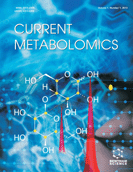Abstract
Background: Metabolomics aims to characterize the metabolic phenotype and metabolic pathways utilized by microorganisms or other cellular systems. A crucial component to metabolomics research as it applies to microbial metabolism is the development of robust and reproducible methods for extraction of intracellular metabolites. The goal is to extract all metabolites in a non-biased and consistent manner; however, most methods used thus far are targeted to specific metabolite classes and use harsh conditions that may contribute to metabolite degradation. Metabolite extraction methodologies need to be optimized for each microorganism of interest due to different cellular characteristics contributing to lysis resistance.
Methods: Three cell pellet wash solutions were compared for the potential to influence intracellular metabolite leakage of P. aeruginosa. We also compared four different extraction methods using (i) methanol:chloroform (2:1); (ii) 50% methanol; (iii) 100% methanol; or (iv) 100% water to extract intracellular metabolites from P. aeruginosa planktonic and biofilm cultures.
Results: Intracellular metabolite extraction efficiency was found to be dependent on the extraction method and varies between microbial modes of growth. Methods using the 60% methanol wash produced the greatest amount of intracellular material leakage. Quantification of intracellular metabolites via 1H NMR showed that extraction protocols using 100% water or 50% methanol achieved the greatest extraction efficiencies, while addition of sonication to facilitate cell lysis to the 50% methanol extraction method resulted in at least a two-fold increase in signal intensities for approximately half of the metabolites identified. Phosphate buffered saline (PBS) was determined to be the most appropriate wash solution, yielding little intracellular metabolite leakage from cells.
Conclusion: We determined that washing in 1X PBS and extracting intracellular metabolites with 50% methanol is the most appropriate metabolite extraction protocol because (a) leakage is minimal; (b) a broad range of metabolites present at sufficiently high concentrations is detectable by NMR; and (c) this method proved suitable for metabolite extraction of both planktonic and biofilm P. aeruginosa cultures.
Keywords: Biofilm, 1H NMR, metabolite extraction, planktonic cell cultures, P. aeruginosa, untargeted metabolomics.
 51
51 5
5








.jpeg)








